
Arkanoid is a 1986 block breaker arcade game developed and published by Taito. In North America, it was published by Romstar. Controlling a paddle-like craft known as the Vaus, the player is tasked with clearing a formation of colorful blocks by deflecting a ball towards it without letting the ball leave the bottom edge of the playfield. Some blocks contain power-ups that have various effects, such as increasing the length of the Vaus, creating several additional balls, or turning the Vaus into a laser cannon. Other blocks may be indestructible or require multiple hits to break.

Breakout is an arcade video game developed and published by Atari, Inc. and released on May 13, 1976. It was designed by Steve Wozniak, based on conceptualization from Nolan Bushnell and Steve Bristow who were influenced by the seminal 1972 Atari arcade game Pong. In Breakout, a layer of bricks lines the top third of the screen and the goal is to destroy them all by repeatedly bouncing a ball off a paddle into them. The arcade game was released in Japan by Namco. Breakout was a worldwide commercial success, among the top five highest-grossing arcade video games of 1976 in both the United States and Japan and then among the top three highest-grossing arcade video games of 1977 in the US and Japan. The 1978 Atari VCS port uses color graphics instead of a monochrome screen with colored overlay.
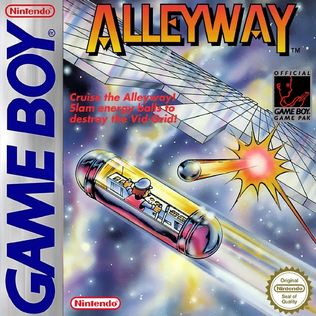
Alleyway is a 1989 video game developed by Nintendo and Intelligent Systems and published by Nintendo as a global launch title for the Game Boy. It is a Breakout clone and one of the first four games developed and released for the system. The game was released first in Japan in 1989, in North America later that year, and in Europe in 1990. It was later re-released for the Nintendo 3DS Virtual Console in June 2011.
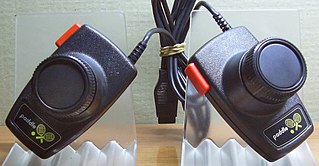
A paddle is a game controller with a round wheel and one or more fire buttons, where the wheel is typically used to control movement of the player object along one axis of the video screen. A paddle controller rotates through a fixed arc ; it has a stop at each end.
Super DX-Ball is a shareware game by BlitWise Productions, released on November 10, 2004. It is an enhanced remake to the classic brick-buster hit DX-Ball. Among new features since previous games, Super DX-Ball introduces refined, classic-style graphics and a new dimension of bricks with various shapes and sizes, adding a unique gameplay experience in a Breakout-style game.

Kirby’s Block Ball, known in Japan as Kirby no Block Ball, is a 1995 video game developed by TOSE and published by Nintendo for the Game Boy portable console. It is a spin-off of the Kirby video game series. It is a Breakout clone; the player controls paddles along the screen's edge to knock a bouncing ball, Kirby, into destructible bricks. The game's 55 levels include power-ups, bonus rounds, and minigames. Kirby's Block Ball was and Nintendo R&D1. The team spent half a year revising the gameplay to match Kirby's signature characteristics. Kirby's Block Ball was released in Japan on December 14, 1995, later in North America on May 13, 1996 and finally in Europe on August 29, 1996.

Super Breakout is a sequel to the 1976 video game Breakout released in arcades in September 1978 by Atari, Inc. It was written by Ed Rotberg. The game uses the same mechanics as Breakout, but allows the selection of three distinct game modes via a knob on the cabinet—two of which involve multiple, simultaneous balls in play. Both the original and sequel are in black and white with monitor overlays to add color. It was distributed in Japan by Namco and Esco Trading.

Arkanoid: Revenge of Doh is an arcade game released by Taito in 1987 as a sequel to Arkanoid.
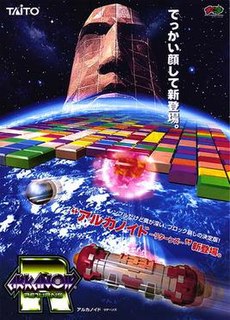
Arkanoid Returns is an arcade game released by Taito in February 1997 as part of the Arkanoid series. It is the fourth overall, and third to be released in arcades. The game was ported to the PlayStation later the same year, with an updated home release being released afterwards titled Arkanoid R 2000.
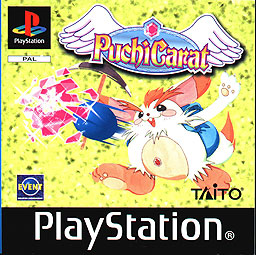
Puchi Carat is a 1997 arcade game by Taito.

Amegas is a clone of Arkanoid written by Guido Bartels for the Amiga and published by reLINE Software in 1987. In Australia the game was published by Ozisoft.
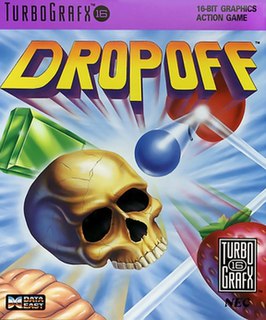
Drop Off is a Breakout clone by Data East. The game was published in 1990 for the PC Engine as Drop Rock Hora Hora and subsequently saw a US release for the TurboGrafx-16 as Drop Off.
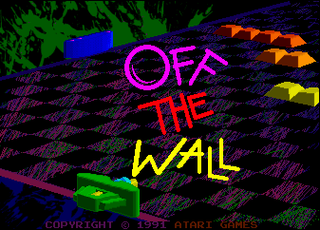
Off the Wall is an arcade game produced by Atari Games and released in North America in 1991. A remake of Breakout, it has a much wider variety of gameplay elements of the original. Most notably, it models spin on the ball. Off the Wall supports up to three players simultaneously. The game's graphics include many backgrounds modeled after modern abstract art.

Superball Arcade is a shareware Arkanoid-like video game for Microsoft Windows first released on May 29, 2003 by Canadian developer Cheeky Monkey Software. The game is a sequel to the 2002 game Atomic Superball: The Chicken Edition.

Arkanoid DS is a breakout video game developed by Taito and published by Square Enix for the Nintendo DS. It was released on December 6, 2007.

Break 'Em All, known as Brick 'Em All DS in Europe, is an Arkanoid clone released in 2005 for the Nintendo DS. The game features several single player modes, as well as single-cart multiplayer for up to 8 players. The game utilized the system's touch screen to control the paddle, as well as activate power-ups. Power-Ups could also be activated by pressing up on the D-Pad or by pressing the X Button.

Shatter is a 2009 arcade video game developed and published by Sidhe Interactive. The game was released on July 23, 2009 for PlayStation 3 via PlayStation Network, on March 15, 2010 for Microsoft Windows, on September 18, 2012 for OS X, and on March 14, 2013 for Linux. A remastered version developed by PikPok and published by Netflix was released for iOS and Android via Netflix Games on March 23, 2022. A version of the mobile remaster published by PikPok, subtitled Remastered Deluxe, is set to release in Q4 2022 for Windows, Nintendo Switch, PlayStation 4, PlayStation 5, Xbox One, and Xbox Series X/S.
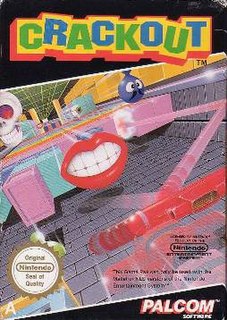
Crackout is a video game by Konami that was released in Japan for the Family Computer Disk System on December 13, 1986, and in Europe and Australia for the Nintendo Entertainment System in 1991. It is a Breakout clone, with some additional elements not normally found in other games in the genre.
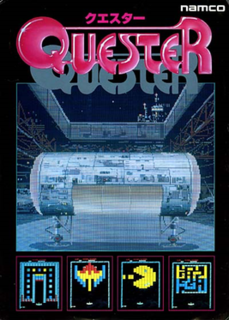
Quester is a 1987 block breaker arcade game developed and published in Japan by Namco. Controlling a paddle-like craft, the player is tasked with clearing each stage by deflecting a ball towards a formation of bricks towards the top of the screen. Power-up items are hidden in some blocks, which can increase the size of the player's paddle, a barrier that prevents the ball from moving off the screen, and a forcefield that will release eight other balls when touched.

Breakout 2000 is an action video game developed by MP Games and published by Telegames exclusively for the Atari Jaguar on December 9, 1996. Part of Atari Corp.'s 2000 series, it is a remake of the 1976 arcade game Breakout, which spawned an entire genre of Breakout clones with its concept, such as Taito's 1986 arcade game Arkanoid. It is also one of the last licensed releases for the Jaguar, after it was discontinued in 1996 by Atari Corporation, who merged with JT Storage in a reverse takeover prior to the game's launch.


















